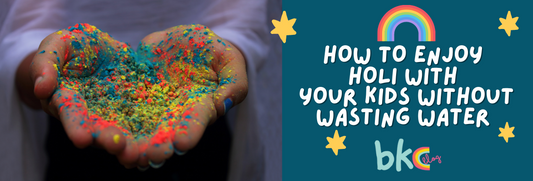Right from their early years, children are taught many general knowledge facts which sadly fail to pique their interest in our country’s splendid and fascinating history. Very often the issue lies in the way these are taught, and the types of facts that are shared. Here are some intriguing facts about India that will teach your child about their country, and encourage an interest in these subjects.

India is a country filled with diversity – be it in language, geography, climate, culture, people, religion, or even food! The Indian subcontinent has a rich history that dates as far back as 5,000–6,000 years. The first civilization that existed was the Vedic Civilization, formed roughly in 1500 BCE. Modern India was formed in 1947, when India won its independence from the British Empire.
While it would probably take us a whole lifetime to learn every single thing about the country, here are some cool facts about India just for your kids!
1. Potatoes and Chillies: Foreign Wonders
Yes, you read that right! The humble potato, which is one of the most-used vegetables in Indian households, is not native to India! It actually travelled thousands of miles to get here. Potatoes were indigenous to Peru and unknown to the rest of the world till the 16th century. Christopher Columbus’s travels allowed the potato to journey from its origin, to many countries across the world, and a combination of trade, expansion, and colonialism further ensured its residence here.
It was the early Portuguese and Dutch traders that brought the potato to India. However, it remained restricted to small patches along the Malabar coastline (west coast). It was the East India Company that helped spread the growth and use of potatoes, in the 18th century. Since their goal was to remain in India for a long time, growing potatoes locally made more sense than importing them. Plus, this way, they could start exporting potatoes, which were a novelty, across the world.

The famed Bhut Jolokia (Ghost Pepper) of Assam
Red chillies, a vegetable often attributed to Indian cuisine, didn’t originate in India either! Although used extensively in Indian cuisine, their roots are from Mexico. Like potatoes, they were brought to India by Portuguese traders. Today, India tops the world in the production of dried red chillies. There are even many chilli varieties that are native to the country. Did you know that bhut jolokia (ghost pepper), a native of Assam, is considered to be the world’s spiciest chilli?
Teach your child more about this vast and fascinating subject of food with books like The Journey of Sugar and Healthy Eating from the Zayn and Zoey series.
2. India: A Sport-Loving Country
Cricket is synonymous with India. We have grown up playing cricket in the streets, we gather in crowds to watch matches, and we even invented the game book cricket. The fanfare and excitement that comes with this game is unbelievable! While it is India’s most popular sport, it isn’t our national sport. Hockey is.

Major Manna Singh with the Indian Hockey Team in 1950
Did you know that the Indian men’s hockey team is one of the most successful teams at the Olympics? They have won eight gold medals – in 1928, 1932, 1936, 1948, 1952, 1956, 1964, and 1980 – and have the best overall performance in Olympic history with 83 victories out of the 134 matches played.
The Indian Hockey Federation (IHF) was formed in 1925 in Gwalior, and in 1928, India was the first non-European country to join the International Hockey Federation (FIH).
Not to be left behind, the Indian women’s national field hockey team has made significant strides over the years. The team’s best performances at the Olympic Games have been in Moscow in 1980, where they finished fourth, and then again in Tokyo in 2020, when for the first time ever they reached the semi-final (but failed to win any medals). Following this, the team won a bronze medal at the 2022 Asia Cup. They also won the first-ever-held FIH Women's Nations Cup the same year.
3. Shampoo: Originally Indian
Here’s something to think about every time you and your child enjoy your weekend champi (hair oiling) sessions. The word shampoo originated in India, and is derived from the Hindi word champo, which means to press, knead, or soothe. The act of cleansing hair using herbs originated in the Indus Valley Civilisation and the first shampoo was made by boiling Sapindus (a genus of 5–12 species of shrubs and small trees in the lychee family) with dried Indian gooseberry and a selection of other herbs.

One of Sake Dean Mahamed’s Baths in Brighton, UK
Sake Dean Mahomed, a Bengali traveller, surgeon, and entrepreneur, is credited with introducing the practice of shampooing to Britain. He opened the first commercial “shampooing” salon in England in 1814.
4. Alang: World’s Largest Ship Breaking Yard
Have you ever wondered what happens to the massive ocean liners and cargo ships at the end of their long lives? You can find the answer at the Alang ship breaking yard.

A beached vessel at a recycling yard
Located in the Gulf of Khambhat in Gujarat, it is the world’s largest ship breaking yard and is responsible for dismantling retired freight and cargo ships from around the world. This industry requires extensive labour, and provides direct employment to over 50,000 people and indirect employment to lakhs of workers engaged in re-rolling mills, scrap trade, oxygen gas plants, transport, real estate, and money markets.
The breaking of different ships makes this region a popular hub for raw materials for other industries – steel, wood, fixtures, and equipment.
5. Sundarbans: The Pride of India
Did you know that for hundreds of years the mangrove forests that line the coasts of Mumbai have protected the city from cyclones and excessive flooding?
Mangrove forests are dense, thick trees that are found at the interface between the land, the ocean, and the atmosphere, and maintain the flow of energy and matter between these systems. Mangrove forests protect coastal areas from cyclones, erosion, storm surges, and tsunamis. They are important in maintaining and building the soil, and play a significant role in dissipation of winds, tidal, and wave energy. They also purify the water around them and are relied upon by coral reefs and seagrass beds.

A Royal Bengal Tiger at the Sundarbans
We are also lucky to have the largest mangrove forest in the world right here in India! The Sundarbans, located in West Bengal at the delta formed by the joining of the Padma, Brahmaputra, and Meghna rivers in the Bay of Bengal, stretches up to 40,000 sq km. The forests provide habitat to over 290 bird, 120 fish, 42 mammal, 35 reptile, and eight amphibian species. It is also home to the famed Royal Bengal tiger, the largest of all of the big cat species.
To teach your child more about small habitats and ecosystems, read Small Worlds: Earth and Explore The Rainforest with Zayn and Zoey.
6. Martial Arts: Indian Roots
Many of us know that Yoga has its roots in India, but did you know that the oldest form of martial arts originated in India? Kalaripayattu or Kalari, an Indian martial art originated in Kerala. It is the oldest surviving form of martial arts, with a history spanning over 3,000 years. It was designed for ancient battlefields, with weapons and combative techniques that are unique to Kerala. It contains rituals and philosophies inspired by Hinduism, and its practitioners have deep knowledge of Ayurveda and Yoga.
Seventy-eight-year-old Meenakshi Raghavan Gurukkal is the oldest female practitioner of Kalaripayattu
7. Population: A Fun Fact
India is now the most populated country in the world; at 1.38 billion, we have now surpassed China. But a lesser known fun fact – after New Zealand, we have the second largest population of sheep in the world! We have approximately 75,000 million sheep – 6.4% of the global population.
This can be attributed to the sheep farming sector in India. Sheep have a multi-faceted role in providing wool, milk, meat, skin, and manure. About two-thirds of small and marginal farmers are engaged in sheep rearing and sheep farming. However, Indian sheep are not regarded as dairy sheep, and milk from them is only used in limited areas in Jammu & Kashmir, Rajasthan, and Gujarat.
The states of Rajasthan, Jammu & Kashmir, Uttar Pradesh, Gujarat, and the hilly regions of the North and Eastern Himalayas have the maximum sheep population in India.

Sheep farming in Jammu and Kashmir
Parents, how many of these facts did you know? Our country does truly have a deep, rich, and glorious history! Being the week of India’s Republic Day, let us make our little ones aware of all the beauty, surprising facts, and cultural fusion that we call India!
If your child loves learning about historical facts and figures, or perhaps more so if they don’t, one of the best ways to keep them interested is teaching them through storytelling. Books such as 101 Cool Hilarious Histories and History's Mysteries 51 Intriguing Secrets Of The Past are both fun and fascinating reads that are sure to bring your child hours of delight!





